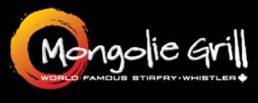A “Term Sheet” is a document that summarizes the terms of an investment. It’s usually proposed by the investor(s) and spells out what they want in order to proceed with an investment. I’m not sure why it’s not called a “Terms Sheet” since there are many terms in it. Perhaps that came about because the terms offered by an investor were good for a specified term (time period).
Usually, the term sheet is not binding because, at this stage of negotiation, many details may not be known or discussed. After agreeing to the terms in principle, a “definitive agreement” is then negotiated by the parties. Many early stage investors will forgo a lengthy definitive agreement by making the term sheet more definitive (perhaps amending it and bolstering it prior to closing).
Here is a sample of a term sheet that many angel investors use. Indeed, this has been pulled together from many sources. While not all terms and conditions are required, they should at least be considered as to their appropriateness.
A term sheet prepared by a Venture Capitalist (VC) will usually be a lot “tougher” than one proposed by angel investors. It also takes longer for a VC to prepare one and generally follows some due diligence performed by the VC. “Due diligence” means that facts about the company and the business opportunity are being investigated. Many angels prefer to offer a term sheet before doing much serious due diligence (accepting things at face value) in order to determine if the company’s founders are willing to accept the terms. Often, a lot of time can be wasted if, for example, the founders aren’t comfortable with vesting provisions or if there’s a valuations issue.
The most important part of the term sheet is valuation. How much is the company worth after (not before) the investment and what percentage do the investors get. Note that I said “after”. Why? Because a company isn’t worth much without the resources to move it forward. The value is, more often than not, determined by a negotiation process between what the entrepreneur has to offer and what the investor has to offer (in both cases, it’s not just always about the money!).
What’s more important than today’s valuation is tomorrow’s value? What can the company be sold for who would be willing to pay that amount? This will drive the current valuation because the seed investors will want to be convinced thatthey will make at least 10 times their money. And, they know that they will likely be diluted along the way due to subsequent financings and stock option exercises. A company valued at $1M today and sold for $10M does not mean a 10X return. It is more likely to result in a 4X or 5X return for these reasons.
To make investors feel comfortable with a higher valuation, founders could offer a liquidation preference and/or a minimum return guarantee (and/or down-round protection, especially on an exit round). This will prevent a situation in which the founders walk away with millions but the investors get less than even money. This also demonstrates founders’ confidence.
Other terms, such as vesting, governance, compensation, buy/sell conditions, decision-making authority are next in line for negotiation.
What`s important for investors is that they retain certain rights. In most cases, investors will end up with less than 50% of the voting shares after making an investment. This means that, unless there is an agreement to the contrary, the majority shareholders, i.e. the founders, can do almost anything they wish to do such as diluting the investors or spending the cash foolishly instead of building the company in accordance with their representations. Agreed-to terms will give investors additional protection.
The importance of corporate governance – i.e. the board of directors and how they are appointed – cannot be over-emphasized. This is especially important when one or two founders have more than 50% of the voting shares. A good board will make sure that the company is well-managed and run for the benefit of all shareholders. The appointment of the board should be covered in a shareholders agreement. That’s why it’s important for investors to address this before they commit their funds.
When you think about it, investors are putting cash on the table today for a projected outcome tomorrow. The value of the cash is easy to determine. Tomorrow`s outcome is uncertain. While founders`intentions may be honorable, there needs to be a way of making adjustments to ownership ratios and ultimate payouts if desired outcomes are not achieved. What does that mean? Well, for example, suppose a valuation of $2M is agreed to and then the company does not perform and is sold for $1M. Will the founders end up with a profit leaving the investors with a loss?
Here is a sample term sheet that I use for WUTIF Capital (VCC) Inc (an angel fund) to guide a negotiation. Over time, it’s been updated to attempt to cover more “learning experiences”. This one is still not as onerous as many I’ve seen from VCs or for that matter, from other angel groups.. Indeed, I see angel organizations – especially in the USA – adopting term sheets that are starting to look more like those that VCs offer. I also like to see a capitalization table included with a term sheet. This always shows who owns what and should be maintained as more shares are issued. Investors are sometimes surprised when they see their initial 15% dwindle to 5% over time.
This is for a “Seed Round” of investment, usually in the range of $100K to $1M. So-called “Series A” rounds are usually larger and require the issuance of a preferential class of shares in order to better protect the investors who are putting up much larger sums.
WUTIF Capital TERM SHEET for SEED Investment Round
|
Company: |
_______________________________ (the “Company”). |
|
Date: |
|
|
Pre-Investment Value: |
Total Shares Issued: __________ @ _______$/shr = $___________ |
|
WUTIF |
__________ Shares (or Units) at $______ /Share.= $___________ |
|
Total Investment Round: |
WUTIF: $_____________ (__________Shares), [WUTIF’s share must be no more than 50% of all capital raised on this round.] |
|
Jurisdiction: |
__ BC Corporations Act, Province of British Columbia; or |
|
ESB Status: |
Company is an Eligible Small Business (ESB) under the terms of the British Columbia “Small Business Venture Capital Act” (“SBVCA”). [This term would only apply in B.C. where investors want to use the Provincial 30% tax credits available to angel investors.] |
|
Exemptions: |
Company will use all appropriate and available exemptions from prospectus requirements. The most common exemption used by angel investors is the “accredited investor” exemption. Unfortunately, there are very few “exemptions” that companies can use to raise capital. |
|
Closing: |
Closing shall take place within fifteen (15) days of the date when Company has raised, subsequent to ____ __, ______ (date), additional financing of $__________ and has provided evidence of such financing satisfactory to WUTIF. (Could have a second closing to accommodate additional investors for a specified time period) |
|
Rights: |
These shares are convertible on a 1:1 basis with any new class of shares that may be created on the next financing round. Also, in the event that shares in the next round(s), are sold at a lower price, additional shares will be issued at no cost to the Investors on this round so that their average cost per share is the same as that of said round. In the event the Company is sold at a share price below the average share price paid by Investors, additional shares will be issued to Investors. This would have the effect of giving the Investors a return of capital and avoids a situation in which investors have a negative return while founders have a positive return. [As an alternative to the rights (down-round protection and conversion) expressed above, it may be simpler to offer the Investors a liquidation preference on sale of the Company giving them a return of their capital first and then distributing the balance of any sale proceeds to all shareholders pro-rata to their equity interests. This should be implemented by using a new class of Preferred Shares.] In the event that subsequent financings are done by way of debt, e.g. convertible debentures, investors on this round will also be entitled to, at their option, exchange their shares for the same instrument at the price paid for their shares. Investors in this Investment Round will be granted (pro-rata to maintain share ownership percentage) participatory rights in respect of future financings and tag-along rights in the event of sale of control of the Company or sale of shares by the Founders. Company Articles to be amended to include drag-along rights in the event of sale of the entire Company by a __% majority vote. |
|
Exit Rights
|
WUTIF and other investors on this round shall be entitled to a put option on their shares obligating the Company (or its principals) to buy back the shares issued pursuant to this term sheet [specify terms of put option]. This may be seen as very onerous. Its purpose is to ensure that investors can eventually sell their shares rather than being locked in forever. |
|
Board Participation:
|
WUTIF and other investors on this round shall be entitled to nominate one director on the Board of Directors. WUTIF will also be given observer status. There will be ___(suggest at least 3) directors, with a majority of them being non-management. [Board composition needs to be defined in Shareholders Agreement.] |
|
Audit Requirements: |
Company shall provide audited/unaudited financial statements beginning from the year ended _______________. |
|
Voting: |
Each Share will be entitled to one vote.
|
|
Vesting |
The Founders’ shares, i.e. those issued for no or nominal consideration will vest over time. 50% of the shares will vest linearly over a period of 5 years (longer if time to exit is much longer). The remaining 50% will vest at the time that the Company is sold or when a liquidity event is achieved for the Investors. If the Founders cease their employment, all unvested shares will be forfeited. [this is negotiable, based on stage of development of Company, number of founders, cap table structure – see Note 2] |
|
Dividend: |
No provision has been made for the payment of any dividend for the foreseeable future. |
|
Use of Proceeds: |
Proceeds from this investment will be used for (state uses) and for general corporate purposes. |
|
Information Rights: |
WUTIF will be entitled to receive monthly financial reports (see sample) from the Company, press releases and monthly management updates (financial summary and progress against milestones) and to participate at Annual General Meetings. Company will provide annual information returns as required under the VCC Act. (Suggest use of governance program, e.g. www.aprio.net). |
|
Shareholders Agreement: |
If one exists, WUTIF will need to be added as a shareholder and the terms and conditions agreed to herein need to be included in the amended agreement with all parties agreeing thereto. If no agreement exists, WUTIF may require that one be prepared. |
|
Breakup Fee: |
If, after signing this Terms Sheet, Company elects not to accept WUTIF’s investment under the terms herein, a payment of 10% of the Amount committed by WUTIF will become due and payable to WUTIF. This may be paid in shares at the Offering Price. There is no penalty if the offering is not completed due to the minimum investment not being achieved. (This is a no-shop clause) |
|
Syndication: |
WUTIF may assist the Company by bringing in additional investors under this Term Sheet. |
|
Board Approvals: |
This Terms Sheet and the execution thereof is subject to approval by WUTIF’s Board of Directors and is subject to the satisfactory completion of due diligence by WUTIF which will be concluded within 21 days of the date hereof. |
|
Time Limitation: |
This Terms Sheet expires on ___________ unless signed by all parties prior to that date. |
|
Expenses: |
Company will pay WUTIF’s expenses (legal, accounting, due diligence, incidentals, etc) associated with this financing, calculated at 2% of WUTIF’s total investment, regardless of WUTIF’s actual expenses. This will be paid within 30 days of closing the investment. |
|
Salary Caps: |
Principals in company agree to limit salaries to be paid to principals (as per shareholders agreement) to ___________/yr until the company is cash-flow positive (or until some other milestone is achieved – BUT – make sure it is clearly defined) |
|
Stock Options: |
The Company will not grant any stock options or shares to employees other than those allocated in the Capitalization Table without the approval of the directors and WUTIF. The Company will grant shares (subject to vesting where appropriate) rather than use options wherever possible. |
|
Management: |
WUTIF may require that Company engage management services provided by or recommended by WUTIF (to be determined). |
|
Confidentiality: |
Mutual non-disclosure and confidentiality covenants apply to this Terms Sheet. |
|
Binding Obligations: |
The terms and conditions herein are binding upon the parties hereto. |
Agreed to this __ day of ______,20__:
By the Company and by WUTIF:
____________________________ ____________________________
Company WUTIF Capital (VCC) Inc
Address
And agreed to by the principals/founders of the Company:
_____________________ ____________________________
(Name) (Name)
ATTACHMENTS:
(Must include the following)
1.Capitalization Table (proforma)
2.Company’s Subscription Agreement
Note 1: re Investment Eligibility under the SBVCA: Under Section 13, all VCCs and persons associated with VCCs can not collectively hold more than 50% of the shares in the ESB. And under Section 14, if a major shareholder in the ESB (holding >10%) is also a participant in the VCC, then the ESB is ineligible for an investment from the VCC. The ESB must make the necessary representation in this regard before an investment can be considered.
Note 2: The purpose of vesting is to ensure that founder(s) shares are earned – both by contributing over time as well as ensuring that investors will ultimately be able to exit and cash in. The idea behind forfeiting shares is not to penalize the founder(s) but to be able to make the forfeited shares available to new management (under similar terms) to carry on with the task.
WUTIF/TERMS SHEET – sample.doc updated: Apr 13, 2019
|
Exit Rights
|
WUTIF and other investors on this round shall be entitled to a put option on their shares obligating the Company (or its principals) to buy the shares issued pursuant to this term sheet. [specify terms of put option] |

 September 7th, 2011
September 7th, 2011  Mike
Mike  Posted in
Posted in  Tags:
Tags: 









